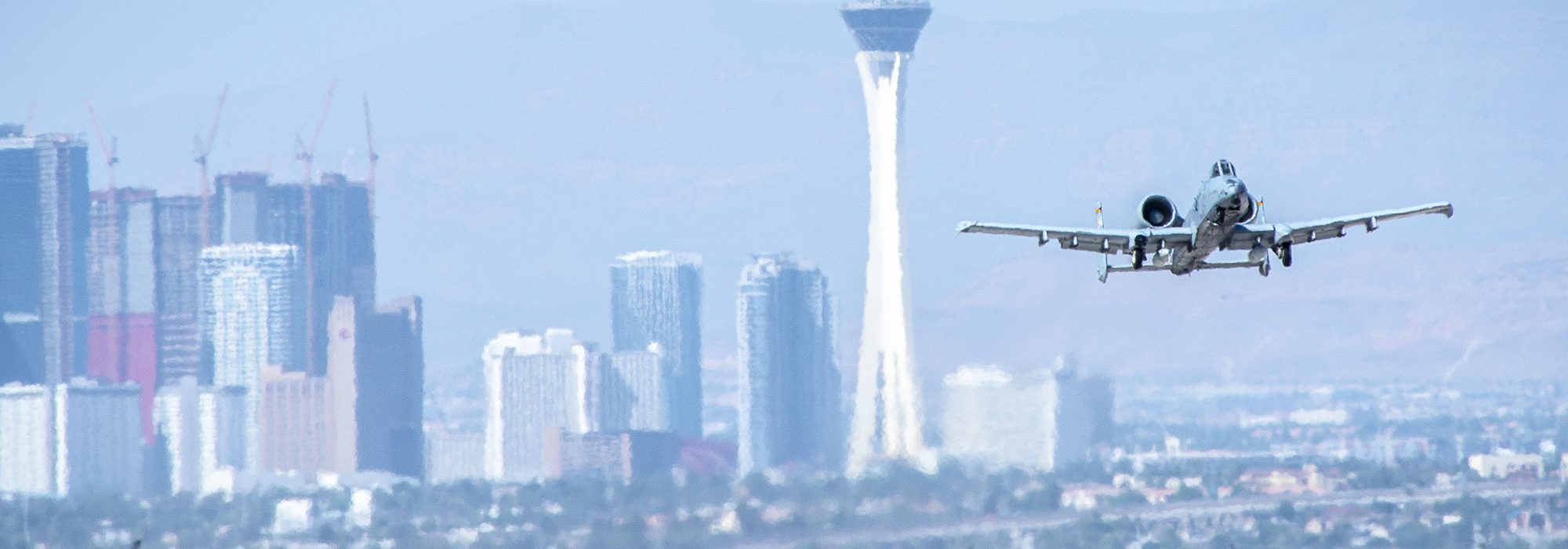Whatever It Took
Billy Nellis may not have been a natural fit for the role of wartime hero. He had to work hard for years to overcome obstacles, but he finally made it, and his heroism has not been forgotten.
His name graces Nellis Air Force Base, Nev., “Home of the fighter pilot.”
William Harrell Nellis grew up in tiny Searchlight, Nev. His father worked as a miner. Searchlight had no high school so, at age 13, Billy moved to Las Vegas in order to attend one there.
Billy could not afford college. After graduation, he took odd jobs until he eventually found steady work with the railroad.
Then came World War II. At the time, Nellis was married and the father of two—safe from the draft. However, he decided to join the Army Air Forces and become a pilot. It wasn’t easy.
Nellis, 26, was older than most enlistees. To impress the Army, he took flying lessons, soloed, and logged eight hours aloft.
When the Army still hesitated, Nellis tapped a former boss, Berkeley Bunker—by then a U.S. senator—for help. On Dec. 2, 1942, the Army finally accepted Nellis into its ranks.
Nellis capped a year of flight training on Jan. 7, 1944, when he was commissioned a flight officer. In May 1944, Nellis left for Europe, where he linked up with the 513th Fighter Squadron. He trained as a P-47 Thunderbolt pilot.
After the Normandy Invasion, Nellis flew 70 combat missions in support of Gen. George S. Patton’s Third Army, strafing and bombing German positions in northern France. Twice, he was shot down and managed return to his unit and keep flying. He was twice promoted.
On Dec. 18, 1944, Germany launched a major counteroffensive now known as the Battle of the Bulge. Fighting took place within 10 miles of Bastogne, Belgium. Weather was awful. Air missions flown in the area were extremely hazardous. Nellis’ squadron flew sorties from dawn to dusk in support of the U.S. 101st Airborne Division.
In this environment, Nellis flew his final combat mission.
It came on Dec. 27, 1944. Nellis took off in his P-47 and began strafing a German convoy of armor and transports in Luxembourg.
Suddenly, the P-47 was hit by concentrated ground fire. The fighter burst into flames and plunged downward. It was too low for Nellis to bail out, and so he rode the airplane all of the way to the ground, crashing near Winseler, Luxembourg.
In April 1945, US forces recovered the body. It was interred in Henri Chapelle American Cemetery and Memorial in Belgium.
This combat heroism and sacrifice transformed Billy Nellis overnight into a local Nevada hero. At the urging of Nevadans, the U.S. on April 30, 1950, renamed Las Vegas Air Force Base in honor of the fighter pilot who started out as a poor boy in Searchlight.
Today, Nellis is the home of more squadrons than any other base in the Air Force. It hosts major air combat exercises such as Red Flag and close air support exercises such as Green Flag. It is also the home of USAF Warfare Center, USAF Weapons School, and the 57th Wing.

William Harrell Nellis
- Born: March 8, 1916, Santa Rita, N.M.
- Died: Dec. 27, 1944, Winseler, Luxembourg
- Education: Las Vegas High School
- Occupation: US military officer, pilot
- Service: United States Army Air Forces
- Main Era: World War II
- Years Active: 1942-44
- Final Grade: First Lieutenant
- Honors: Legion of Merit (2); Distinguished Flying Cross (2); Purple Heart (posthumously); Air Medal (7); American Campaign Medal; European African Middle Eastern Campaign Medal (5); World War II Victory Medal (posthumously)
- Resting Place: Henri Chapelle American Cemetery and Memorial, Belgium

Nellis Air Force Base
- State: Nevada
- Nearest City: Las Vegas
- Area: 17.7 sq mi / 11,300 acres
- Status: Open, operational
- Opened as Las Vegas Army Air Field: July 1941
- Deactivated: January 1947
- Reactivated as Las Vegas Air Force Base: Jan. 4, 1949
- Renamed Nellis Air Force Base: May 1, 1950
- Current owner: Air Combat Command
- Former owners: West Coast Air Corps Training Center, Air Corps Flying Training Command, Air Training Command, Tactical Air Command.
- Home of: 57th Wing
